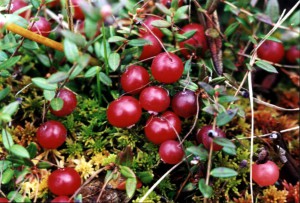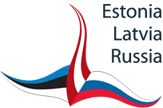Ramsar Wetlands
 In 1971, in the Iranian city of Ramsar the Convention on Internationally Important Wetlands was signed, mainly considered as avian habitats. Developed within that convention, now usually referred to as the Ramsar Convention, were the criteria to identify internationally important wetlands to be listed in the Convention, the classification of types of wetland ecosystems, and the main principles of their rational use and protection. Russia joined the Ramsar Convention in 1976. At present, 35 territories and aquatoria of the country have been declared internationally significant wetlands.
In 1971, in the Iranian city of Ramsar the Convention on Internationally Important Wetlands was signed, mainly considered as avian habitats. Developed within that convention, now usually referred to as the Ramsar Convention, were the criteria to identify internationally important wetlands to be listed in the Convention, the classification of types of wetland ecosystems, and the main principles of their rational use and protection. Russia joined the Ramsar Convention in 1976. At present, 35 territories and aquatoria of the country have been declared internationally significant wetlands.
One of the 35 Russian Ramsar wetlands is located in the territory of the Pskov Region – Pskov-Peipsi Lakeside Lowlands – which includes those parts of the Gdov and Pskov districts situated along the eastern shore of the Pskov-PeipsiLake. The borders of the wetlands encapsulated the deltas and lower streams of the Rivers Velikaya, Zhelcha and Chyornaya, the Remda State Preserve and the narrow strip of the eastern Pskov lakeshore. The total area occupied comprises 93 thousand hectares, including 24 thousand hectares of the Pskov and PeipsiLakes’ aquatoria.
 The Pskov-Peipsi Ramsar Lakeside Wetlands is a system of large lakes, ranking third in Europe by square, with the adjacent lowlands, transition and high moors, smaller lakes, and a system of smaller rivers, surrounded by woods, overgrown fields and anthropogenic lands. The nucleus of the Ramsar wetlands is the Remda Federal Zoological Preserve (Gdov district).
The Pskov-Peipsi Ramsar Lakeside Wetlands is a system of large lakes, ranking third in Europe by square, with the adjacent lowlands, transition and high moors, smaller lakes, and a system of smaller rivers, surrounded by woods, overgrown fields and anthropogenic lands. The nucleus of the Ramsar wetlands is the Remda Federal Zoological Preserve (Gdov district).
The reed strips with open inner reaches, rich in both floating and submerged vegetation, are of particular value for birds. The reed thickets, lowland moors, rivers, streams, flood plains, and thick shrubbery serve as grounds for mass nesting of both waterfowls and aquatic birds. Over 300 vertebrate species inhabit the territory of the wetlands. The local avifauna includes 222 species of 17 orders, with 122 of them verified as nesting here. During the nesting season, the following rare and protected species were encountered: erne, osprey, black-throated diver, bittern, black stork, greater spotted eagle, Montagu’s harrier, crake, greater golden plover, greenshank, curlew, stone plover, oystercatcher, golden bunting, and butcherbird. 652 species of vascular plants grow in the area of the  wetlands, with 58 of those being rare or protected regionally, including long-leaf orchis, fen orchis and meadow pasqueflower listed in the Russian Red Book.
wetlands, with 58 of those being rare or protected regionally, including long-leaf orchis, fen orchis and meadow pasqueflower listed in the Russian Red Book.
The Pskov-Peipsi Lakeside Lowlands are rich in archeological monuments, religious architecture and historical sites. There are many Baltic and Slavic burial mounds (by the villages of Glush, Kola, Molgovo etc.), as well as ancient hamlets and settlements of Baltic tribes. Next to Veteri there is a temple rock dating back to the first millennium A.D., and near Put’kovo, Pnyovo, and Chudskiye Zakhody – stone crosses of 14-17th centuries. Also, many churches remain: St. Nicholas in Remda, Protecting Veil in Borovik, Godmother’s Protecting Veil in Mtezha; among them the ancient temple of Archangel Michael (1462) in Kobylye Gorodische is the most famous, and next to it, in Uzmen’, there is the site of the famous Battle on Ice, in which Prince Alexander Nevsky and his troops defeated Teutonic knights in 1242.


